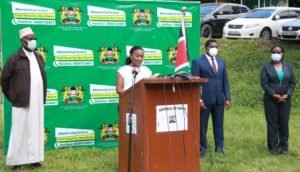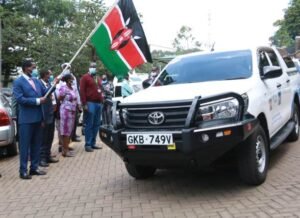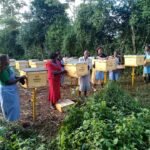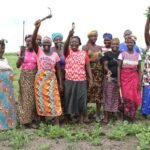By Rootooba Corespondent, 15 May 2020
The government plans to assist communities affected by locusts invasion to rebuild their livelihoods, Agriculture Cabinet Secretary Peter Munya has said.
While launching an impact assessment team to evaluate the impact that desert locusts have had in the various counties, the CS noted that the report they get will provide a direction that the government will pursue in terms of extending support to the affected communities.
“Most communities mainly in the arid and semi-arid areas have been complaining of loss of livestock because the vegetation has been depleted by the pests”, Munya said.
He explained that although work had been delayed due to preparations it would now kick off through the Red Cross who have been contracted by the Food and Agriculture Organization of the United Nations (FAO) to carry the assessment.
“The first meeting with the CECs of Agriculture will take off this Friday and County Units can start doing the assessment with the community affected and also leaders who have been on the ground “, Munya said.
Dr. Tobias Takavarasha, FAO Country Representative said the fight against hunger has been facing attack from desert locust and for any intervention to come to assist the damages, there is need for scientific data.
This assessment which FAO has funded to a tune of KES 42 million will look at the areas, acreage and the number of people affected, as well as the effects of livelihoods so that government can make a decision on what recovery efforts are needed to rebuild what farmers have lost”, he said.
Dr. Takavarasha stated that the exercise to be carried out by Red Cross will be able to guide the government on future preparedness on issues of locusts.
Red Cross Secretary General, Dr. Asha Mohamed stated the locust invasion had come at a time when the country was dealing with the COVID-19 pandemic and floods but gave an assurance that the assessment would be done in 16 counties and that on 15th June 2020, the Red Cross would give a preliminary report before giving a final report on July 15, 2020.
“We will employ different methods including interviews of key informers, focus groups discussions at community level , desk review, and more importantly deploy technology where we will be using satellite imagery and drones for some areas that cannot be reached”, she said.
Based on experience, Dr. Mohammed said they have confidence and capability to lead the team in actualizing the project and the report will enable the Government mount a sustainable programme to fully tame the locusts.
The locust menace in the country had spread to 27 counties but efforts by the government and development partners have yielded results as huge swarms have been contained in most regions leaving a few areas exposed, namely Isiolo, Samburu, Marsabit, Turkana and parts of Laikipia.
Tiampati Leleti, a resident and village leader in the Samburu county recently confirmed that he had lost crops even as his livestock suffer due to lack of vegetation because of locusts invasion







